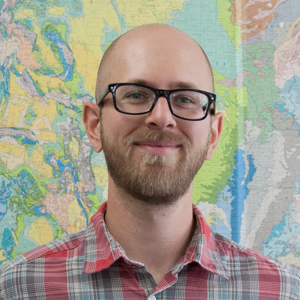Deep earth, crustal anisotropy, gravity: The Burdick Lab plows on
It has been a busy couple of years in the Burdick Lab, with research progressing on topics including the deep earth, crustal anisotropy, gravity and even brief a foray into insect speciation.
In his major field, Scott Burdick received a prestigious NSF CAREER award to study subducted ocean lithosphere in the deep mantle using probabilistic and machine learning methods. This award adds to an ongoing NSF project with colleagues at Kansas and the College of Charleston to create new geochronology software. Early this summer, Benediktas Gaskevicius defended his thesis on tomographic imaging of the Alaskan-Aleutian subduction zone.
 He joins 2021 graduates Ben Moyer and Jonas Sikah (now pursuing a Ph.D. at the Universities of Maryland and Vermont, respectively) in receiving his M.S. in the Burdick Lab.
He joins 2021 graduates Ben Moyer and Jonas Sikah (now pursuing a Ph.D. at the Universities of Maryland and Vermont, respectively) in receiving his M.S. in the Burdick Lab.
On the teaching front, Scott continues to offer courses in math methods and geophysics and has redeveloped ESG 3100: Air and Water around understanding the science behind the IPCC climate report. After leading the joint structure/petrology trip to the St. Francois Mountains in Missouri for two years, he is wistfully handing off to our new structural geologist, Professor Kidane, but he plans to remain a fixture on field trips for the foreseeable future. He also looks forward to developing a new student-led team research course focused on using geophysical instruments to investigate environmental issues in Metro Detroit.
Finally, with funding from the NSF award, Scott is working to develop a planetarium show that will present a virtual trip through Michigan’s geologic history.
At home, Scott and his wife Lindsey welcomed their second daughter in 2022. Matilda and her big sister Flora are already burgeoning geologists, taking great enjoyment in collecting (and throwing) rocks.